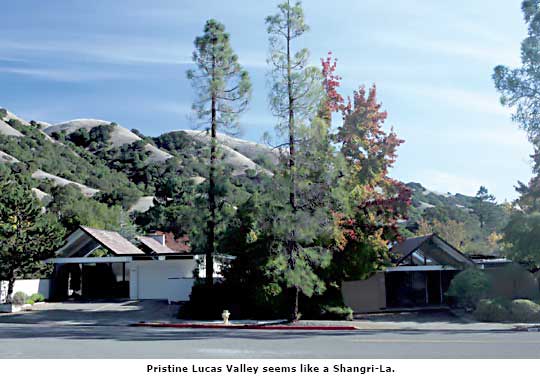Modern Preservation: Streetscape Smarts - Page 5
Saving money through the Mills Act
Some of the best economic arguments for preservation are tied to the state Mills Act. In jurisdictions that choose to participate in the act—Los Angeles is one—owners of nationally, state, or locally designated homes, or qualifying homes in designated historic districts, can reap huge property tax savings of 40 to 60 percent a year.
The Mills Act, which provides tax relief to property owners who agree to preserve the historic architecture and to plow the savings back into the property, is expected to save Todd Jerry $10,000 a year because his home is in the Mar Vista historic district—and because he did the necessary paperwork.
Diane Kane, an architectural historian from San Diego who runs seminars on the Mills Act, says the act can benefit cities as well as individuals, by boosting property values throughout a historic neighborhood. Cities, and related taxing agencies such as school districts, do of course forego some immediate tax income by allowing homeowners to sign up for the program.
Although the Mills Act is a state law, the program is run by each city or county, which sets its own criteria for which properties can take advantage of the act—residential only, commercial only, for example; and decides how many can take advantage each year, Kane says.
Homeowners must sign a contract showing how they will use their savings to improve the home—and that they will do so following rigorous federal standards for rehabbing historic buildings.
Although many cities do not participate in the Mills Act, and some are very stingy in handing out contracts (San Francisco has two Mills Act contracts, for example, while San Diego, perhaps the most liberal, has 800), Kane suggests that homeowners interested in participating urge their local leaders to consider the act's potential benefits for individual buildings and entire neighborhoods.
Going it alone
Despite the prestige and tax breaks that can come with historic designation, sometimes people just will not give up their freedom to do with their homes what they will. Cory Buckner ran into that attitude when she moved to Crestwood Hills. The Brentwood neighborhood, originally built by the Mutual Housing Association for its middle-class members, remains one of the more historic modern neighborhoods in the state.
But Buckner watched with horror as home after home was modified out of existence or demolished, unable to win enough community support to create a historic district.
Her solution? Landmark as many homes as she could individually. So far, Buckner, working with the homes' owners, has preserved 17 homes by making them Los Angeles 'monuments.'
It's a strategy that provides unexpected benefits. In Los Angeles, a historic preservation overlay zone only protects a home's exterior. But individual landmarking protects significant elements of the interior as well.
For Buckner, as for so many preservationists, the urge to save the neighborhood came from someplace deep. "I just saw a real beauty in the simplicity," she said. "It's something you don't see today in houses, that real purity of structure."
Photos: Rochelle Kramer, John Eng, Suzanne Shea, Larry Underhill, David Toerge; and courtesy Los Angeles Conservancy Rancho Verde diagram: courtesy Kathy McGuire and Joe Conley 'Spectacular Vernacular' program: courtesy Chris Green

Tips for preserving your neighborhood
Reach out for supporters. Build support among neighbors by demonstrating the architectural and historic value of your homes. Sponsor tours, hold block parties, mount exhibits. Provide sign-up sheets to recruit supporters. Bring in speakers with enthusiasm, a sense of humor, and a non-threatening manner. Include everyone. Being non-threatening is crucial. Most people don't want to give up control over their homes. Make sure to include everyone in the process.
Educate the neighborhood. Start 'community education' early on, says Cindy Olnick, communications director of the Los Angeles Conservancy. "It can take years to educate your neighbors and get consensus on it," she says. "It won't work without consensus."
Shoot down myths. Be prepared to combat 'rumors and misinformation' about the ill effects of preservation rules, advises Dwayne Howard, who pushed for the historic designation at Mar Vista in Los Angeles. Olnick emphasizes the point by pointing out one common myth: "Some people say you won't be able to change your curtains if you live in a historic district."
Emphasize value. Focus on how preservation can increase prestige and quality of life, and may increase property values as well. For ammunition, check out the paper 'Historic Designation and Residential Property Values' from University of San Diego.




